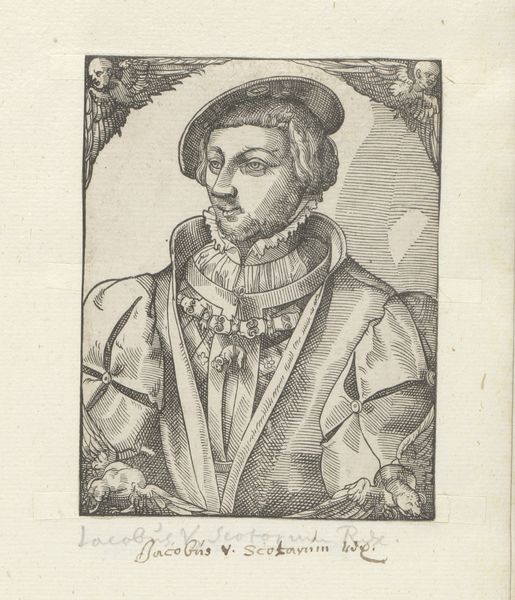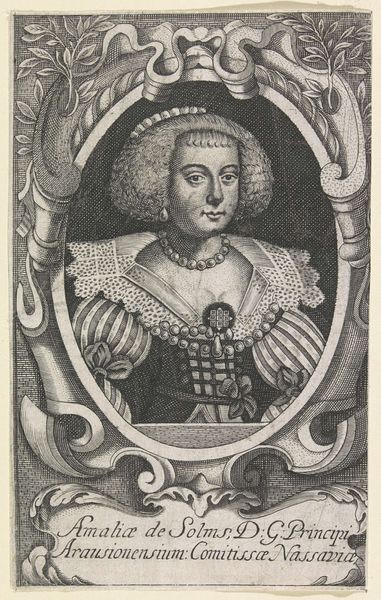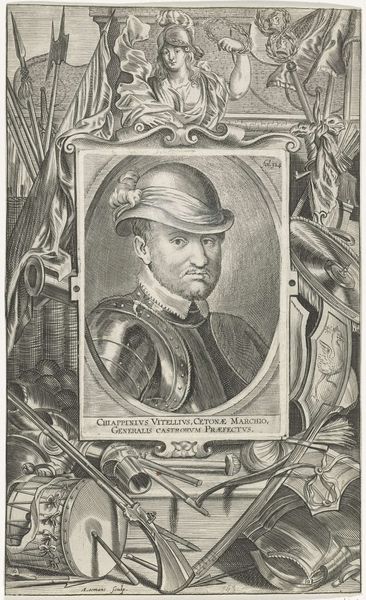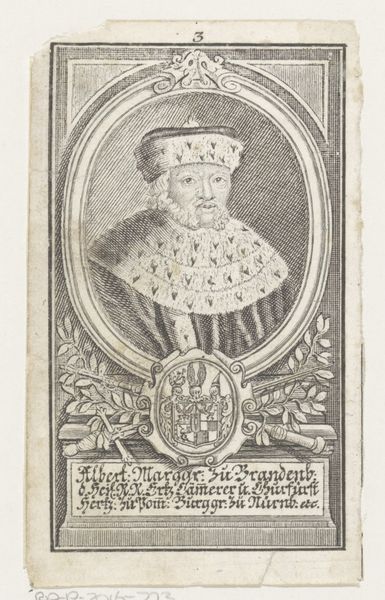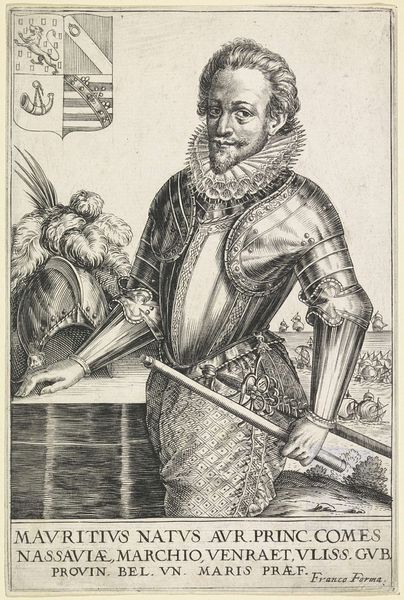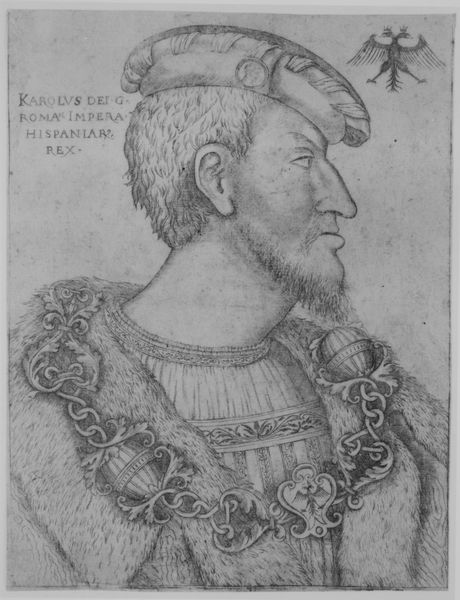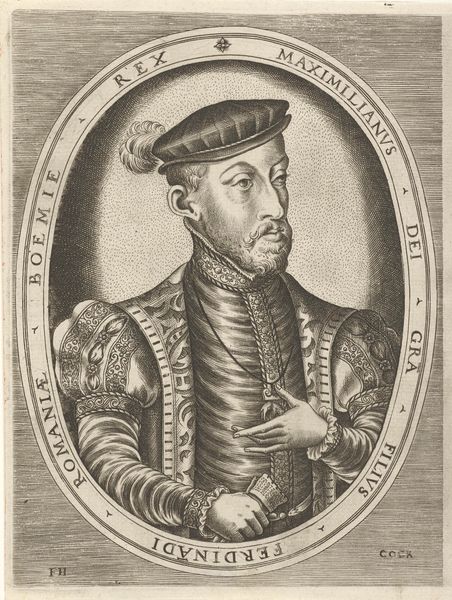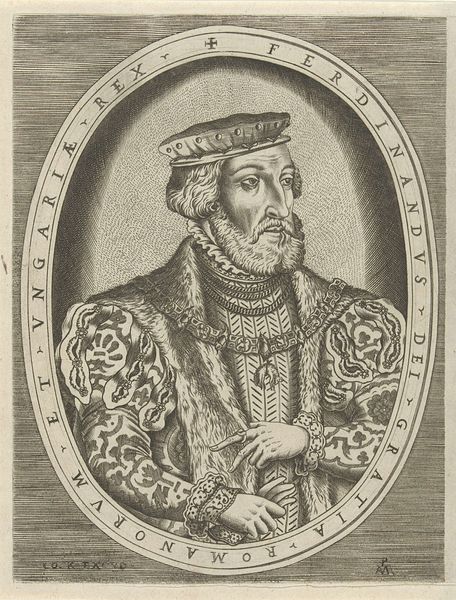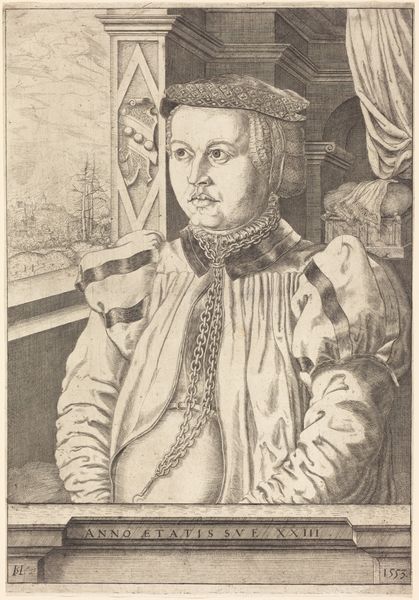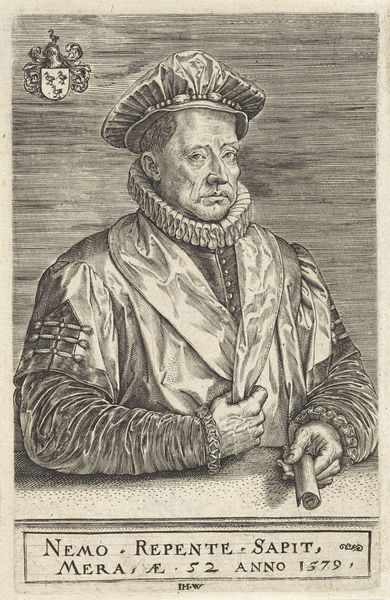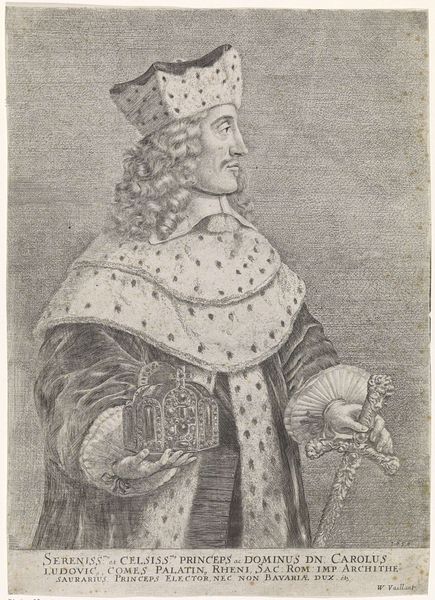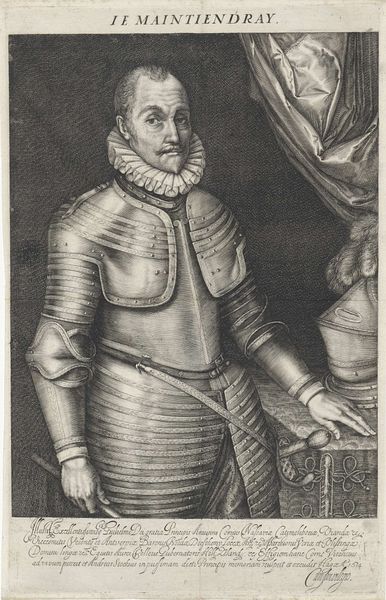
print, engraving
#
portrait
# print
#
11_renaissance
#
northern-renaissance
#
engraving
Dimensions: height 40 mm, width 24 mm
Copyright: Rijks Museum: Open Domain
Editor: We're looking at "Portrait of Claude of France, wife of Francis I," an engraving by Jacob Binck from 1526, held at the Rijksmuseum. It feels so detailed, especially considering it's a print. What stands out to you? Curator: Note how the meticulous hatching creates the illusion of three-dimensionality on a flat plane. Consider the sharp, clean lines which define the figure and her opulent attire. The linear quality of the engraving is paramount, dictating our perception of form and texture. Have you observed the interplay of light and shadow crafted purely through the density of the lines? Editor: Yes, I see that now. It’s amazing how the lines create volume, especially in her sleeves and headdress. What about the flat background? It almost seems like a purposeful choice. Curator: Precisely! The deliberate flatness of the background throws the ornate details of the foreground into sharp relief. Consider also the composition – a profile portrait, lending itself to the emphasis on line and contour. The artist isolates the figure to invite rigorous observation. Do you perceive the way the very deliberate choice of using line emphasizes both figure and flatness simultaneously? Editor: It’s so interesting how the artist uses such a limited medium to create such intricate detail and volume. I hadn’t thought about it that way before, focusing on the lines themselves rather than what they represent. Curator: Indeed. By dissecting the piece into its fundamental elements—line, form, and composition—we can gain a deeper understanding and appreciation of Binck’s mastery and vision.
Comments
No comments
Be the first to comment and join the conversation on the ultimate creative platform.
